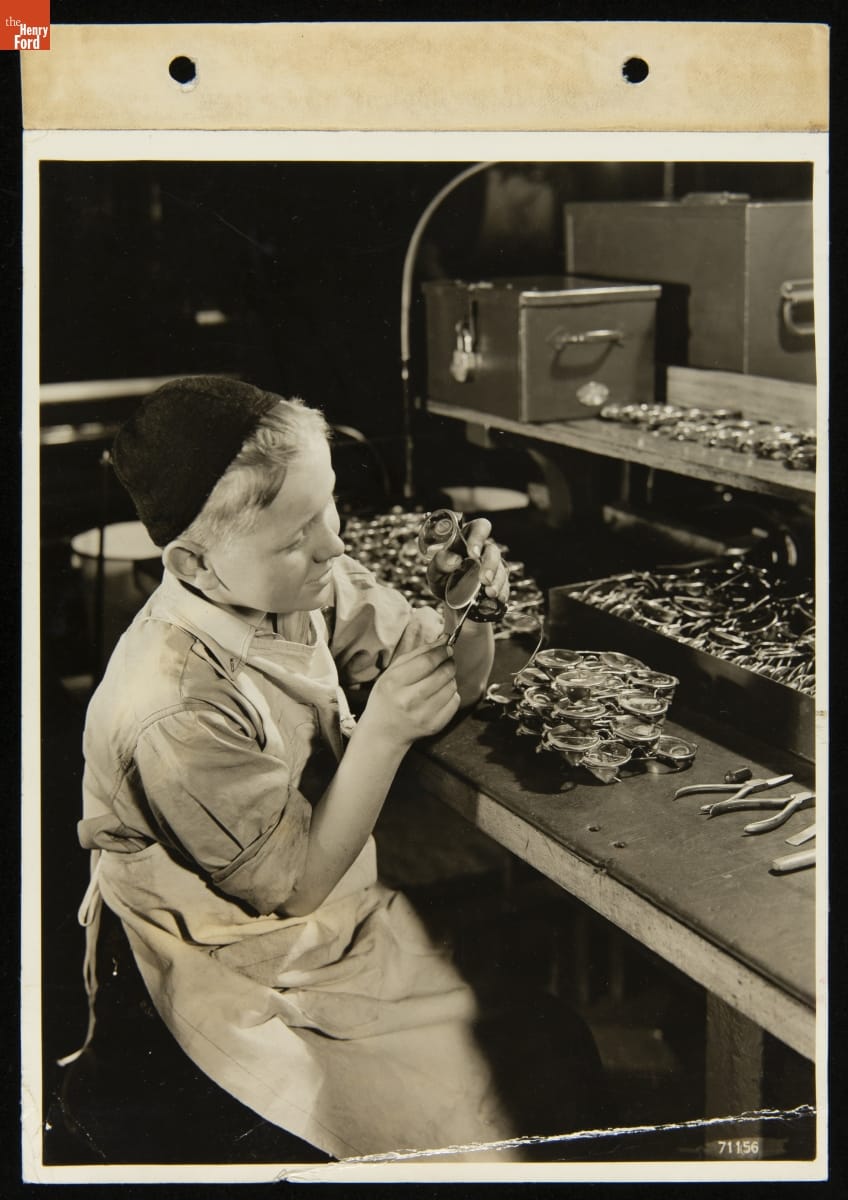Back to School with the Henry Ford Trade School
As students everywhere settle into a new school year, let’s take a look back at the Henry Ford Trade School, founded in 1916.
The first six boys and three instructors, 1916. / THF626066
The school was formed to give young men aged 12–19 an education in industrial arts and trades. Boys who were orphans, family breadwinners, or from low-income families from the Detroit area were eligible for training and split their time between classroom and shop.
Henry Ford Trade School students and teachers in classroom, October 31, 1919. / THF284497
Students working on machinery at the Rouge Plant, 1935. / THF626060
The school started at the Highland Park plant, expanded to the neighboring St. Francis Orphans Home, and then to the Rouge plant and Camp Legion.
Henry Ford Trade School building, August 1, 1923. / THF284499
Trade School students on campus at the Rouge Plant, 1937. / THF626062
While students were receiving their education, they were also being paid an hourly wage, as well as a savings balance that was available to them at graduation. Students started off repairing tools and equipment, and as they gained more experience, moved on to working on machinery.
Student repairing goggles, Rouge Plant, 1938. / THF626064
Trade School student at the Ford Motor Company Rouge Plant, August 3, 1942. / THF245372
Students also got four weeks of vacation and daily hot lunches.
Students at lunch in the Rouge B Building cafeteria, 1937. / THF626068
The students were trained in a wide range of courses, both shop and academic, using textbooks created by the trade school. Shop courses ranged from welding to foundry work, and academic classes from English to metallurgy.

Shop Theory, 1942: cover and page 149. / THF626070, THF626075
When Ford Motor Company participated in various World’s Fairs, top trade school students were selected to demonstrate their unique style of learning.
Henry Ford Trade School demonstration, California Pacific International Exposition, San Diego, 1935. / THF209775
Students also had time for sports and clubs, including baseball, football, and radio club.
Henry Ford Trade School baseball team and manager, August 1927. / THF284507
Henry Ford Trade School football team, 1923. / THF118176
Claude Harvard with other Radio Club members, Henry Ford Trade School, March 1930. / THF272856
The Henry Ford Trade School closed in 1952. In its 36 years of operation, the school graduated over 8,000 boys from Detroit and the surrounding area. Students graduating from the trade school were offered jobs at Ford but were free to accept jobs elsewhere; among the graduates who later worked for Ford was engineer Claude Harvard (shown above). Other students went on to work in a wide range of endeavors from the automotive industry to arts and design, and even medicine and dentistry.
You can view more artifacts related to Henry Ford Trade School in our Digital Collections, or go more in-depth on our AskUs page. While the reading room at the Benson Ford Research Center remains closed at present for research, if you have any questions, please feel free to email us.
Kathy Makas is Reference Archivist at The Henry Ford. This post is based on a September 2021 presentation of History Outside the Box as a story on The Henry Ford’s Instagram channel.
school, childhood, Michigan, 20th century, sports, making, History Outside the Box, Ford Rouge Factory Complex, education, by Kathy Makas, books, archives


Facebook Comments